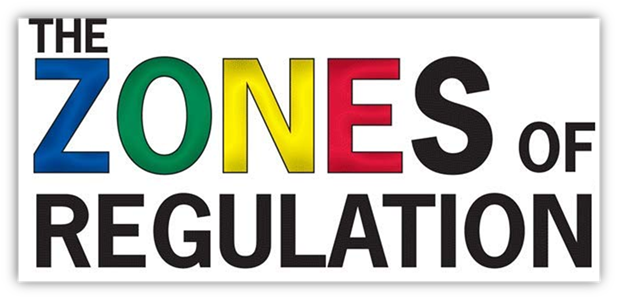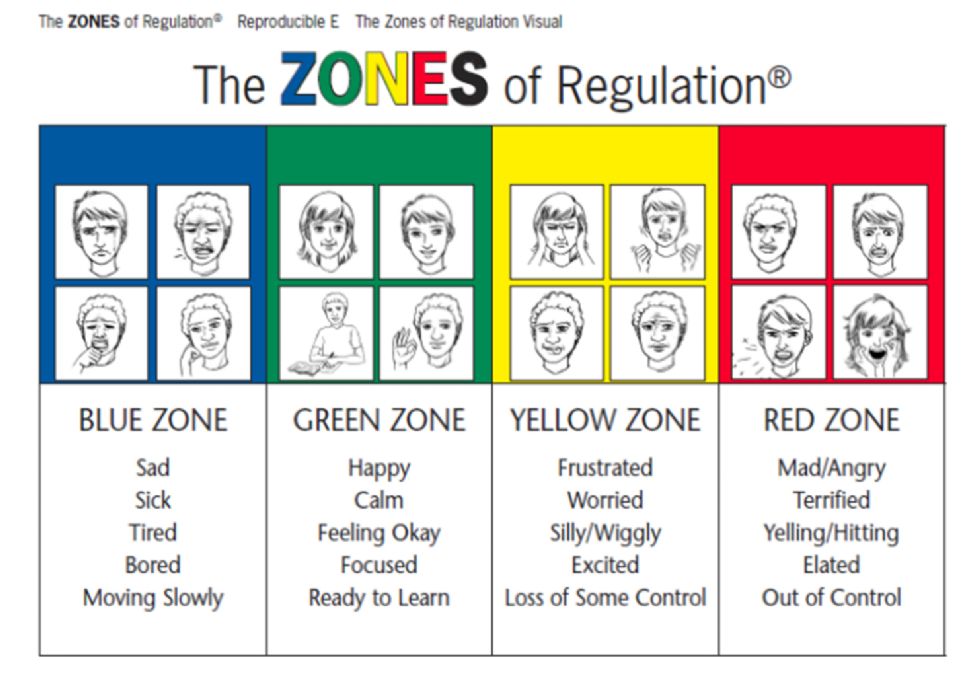Zones of Regulation
Vision Statement
At Whitstable Junior School, we recognise the importance of promoting positive mental health and emotional wellbeing to our students and their families to help keep them safe. Our aim is to provide children with the best possible outcomes in preparation for life-long learning – learning today for life tomorrow. By implementing the Zones of Regulation curriculum, we aim to teach our pupils to identify emotions in themselves and others and provide them with bank of strategies to help regulate their emotions and improve their wellbeing.
Teaching the children about managing their feelings and being responsible for strategies to support self regulation, will support them to be more resilient and more independent in recognising and regulating their feelings. Recognising emotions in others will help them to be kind towards the needs of others.

The Zones of Regulation is a curriculum based around the use of four colours to help children self-identify how they’re feeling and categorise this based on colour.
It teaches children:
- Vocabulary of emotional terms – shared language
- How to recognise their own emotions – by associating them with highly visual coloured zones
- How to detect the emotions of others (read others’ facial expressions)
- What may trigger certain emotions
- How others may interpret their behaviour
- Problem solving skills
Zones of Regulation provides a common language to discuss emotions – a language that is non-judgemental; is simple for children to understand but is helpful for all and teaches healthy coping and regulation strategies.
A person who can self – regulate is able to:
- Remain calm in a stressful situation
- Cheer themselves up after a disappointment
- Know when they are experiencing an emotional overload and adjust.
In our classrooms at WJS, you will find nurture nooks with displays highlighting the zones.
We will be introducing the Zones through discrete teaching lessons and through our RHSE curriculum. We will also be using the Zones language as part of daily school life so all staff will be referring to them, not just their class teacher.

How to support the Zones of Regulation at home
- Identify your own feelings using Zones language in front of your child (e.g. “I’m feeling frustrated because….. , I am in the Yellow Zone.”)
- Talk about which tool you will use to be in the appropriate Zone (e.g. “I’m going to go for a walk as I need to get to the Green Zone.”)
- Provide positive reinforcement when your child is in the Green Zone and if they make efforts to stay in the Green Zone. Eg. “I can see you are working really hard to stay in the Green Zone by…”
- Label which Zones your child is in throughout the day (e.g. “You look sleepy, I wonder if you are in the Blue Zone?”)
- Teach your child which Zone tools they can use (e.g. “It’s time for bed, let’s read a book together in the rocking chair to get to the Blue Zone.”)
- Post and reference the Zones visuals and tools in your home e.g. posters (can be printed out from the website)
- Play “Feelings Charades” Take turns choosing emotions from a stack of cards or papers and act it out using only face and body clues. Guess each other’s emotion, discuss which Zone it’s in and why. (Added challenge: Name a tool you could use when feeling that emotion).
- When you are out and about, ‘people watch’ and guess the feelings/zones of others from their facial expression and body language.
- Read stories about feelings and relate them to your child’s experience.







